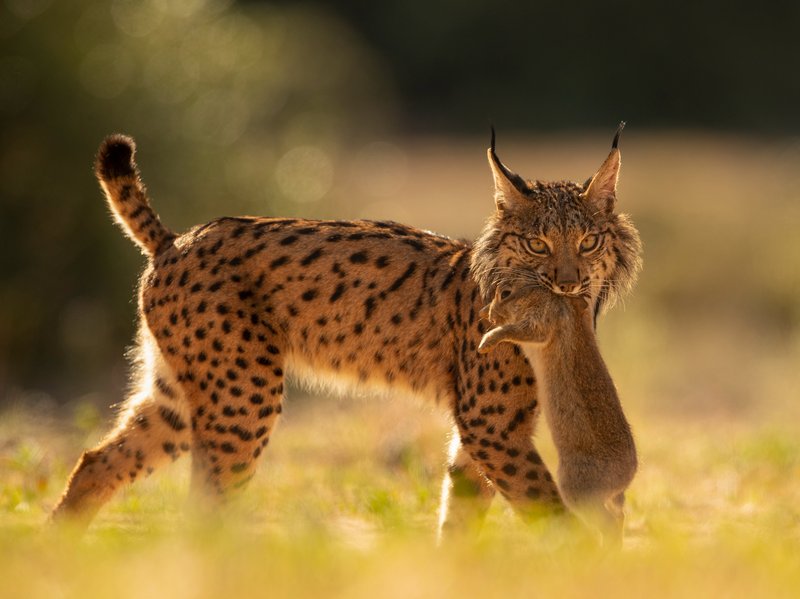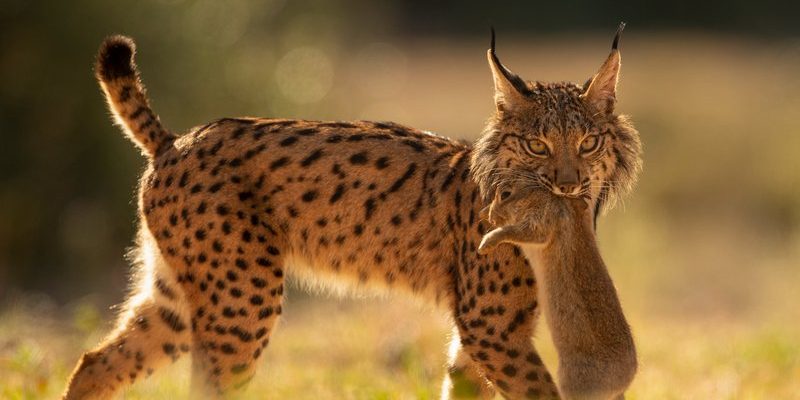
Imagine sitting around a fire, listening to tales of mystical beasts and legendary creatures—this is where the Iberian lynx finds its voice in culture. From ancient myths to modern art, this feline has inspired creativity and curiosity. It serves as a reminder of our deep connection to nature and the stories that bind us to the wild. So, let’s dive into how the Iberian lynx is represented in culture and folklore, exploring its significance and the various ways it has captivated human imagination.
The Iberian Lynx in Spanish Folklore
In Spain, the Iberian lynx is more than just an endangered species; it’s wrapped in layers of folklore. This cat often appears in tales that emphasize its cleverness and elusive nature. For instance, in some stories, the lynx is portrayed as a guardian of the forest, keeping the delicate balance of the ecosystem intact. Villagers believed that if they respected the lynx and its habitats, they would be blessed with good fortune and bountiful harvests.
Many traditional Spanish tales depict the lynx as a mystical creature, almost like a spirit of the woods. The stories often compare the lynx’s grace and stealth with that of a ghost slipping through the trees. You might even find tales where the lynx interacts with humans, guiding lost travelers or warning them of danger. This deep-rooted connection highlights how the Iberian lynx is not just an animal but a crucial element within the tapestry of local lore.
Artistic Representations of the Iberian Lynx
Artists have long been fascinated by the Iberian lynx, using it as a muse for paintings, sculptures, and jewelry. Its striking features, including those tufted ears and patterned fur, offer a rich source of inspiration. You might see the lynx depicted in paintings that celebrate its beauty and the natural landscapes of its habitat. These artworks often serve to raise awareness about the species and the importance of conservation.
In addition to fine art, the Iberian lynx frequently appears in crafts and local artisan products. For example, you can find handcrafted items featuring the lynx’s image, whether it’s earrings shaped like its silhouette or pottery adorned with its likeness. These creations not only honor the animal but also help support conservation efforts by promoting awareness and education about its plight.
Modern Media and the Iberian Lynx
Today, the Iberian lynx has made its way into films, documentaries, and even social media campaigns. These modern representations are essential for connecting younger generations to wildlife conservation. Documentaries often showcase the lynx’s mysterious life, focusing on its struggles and triumphs within a challenging environment. Seeing the lynx in its natural habitat through stunning visuals can evoke empathy and inspire action to preserve its future.
Social media platforms also play a crucial role in spreading awareness. From engaging posts that educate the public about the Iberian lynx to viral videos highlighting its playful nature, these tools help keep the conversation alive. You might even stumble upon challenges that encourage people to share their own creative interpretations of the lynx, fostering a sense of community around wildlife appreciation and conservation.
The Symbolism of the Iberian Lynx
The Iberian lynx often symbolizes strength, survival, and mystery within cultural narratives. As one of the most endangered cats in the world, it stands as a testament to the fragility of our ecosystems and the impacts of human activities. This symbolism transcends borders, resonating with people not only in Spain and Portugal but globally.
In folklore, the lynx’s elusive nature often signifies the importance of protecting our natural world. Its representation encourages respect for wildlife and the environments they inhabit. By understanding the symbolism tied to the Iberian lynx, we can gain insight into broader themes of conservation and our responsibility towards nature.
The Iberian Lynx in Literature
The Iberian lynx also holds a place in literature, appearing in poems and stories that reflect its beauty and the landscapes it inhabits. Writers often use the lynx as a metaphor for freedom and wildness, capturing the essence of untamed nature. You might find poems that describe the lynx’s stealth as it roams the hills, evoking imagery that connects readers to the natural world.
These literary works often serve to remind us of the importance of protecting endangered species. By weaving the lynx into narratives, authors can influence public perception and encourage conservation efforts. It’s a powerful tool that not only entertains but educates, fostering a deeper understanding of the challenges faced by this magnificent creature.
Conservation Efforts Reflected in Culture
Given the Iberian lynx’s critical status, many cultural representations include themes of conservation and the fight for survival. Artists and storytellers alike are stepping up to highlight the importance of protecting this species. Festivals, exhibitions, and community events often feature the lynx, encouraging public engagement in conservation efforts.
Moreover, various organizations leverage the lynx’s cultural significance to promote awareness and fundraising for wildlife preservation. Campaigns might feature artwork or stories that remind us of what’s at stake. Each representation serves to strengthen the collective effort to ensure that the Iberian lynx remains a living symbol of our connection to nature, rather than a relic of the past.
In conclusion, the Iberian lynx is not just a remarkable feline found in the wild; it’s a vital part of cultural narratives, folklore, and artistic expressions across Iberia. Whether through ancient tales or modern media, this creature symbolizes a rich heritage and serves as a poignant reminder of the need for conservation. By celebrating and amplifying its presence in culture, we can inspire a new generation to protect this incredible species and the ecosystems it represents.

